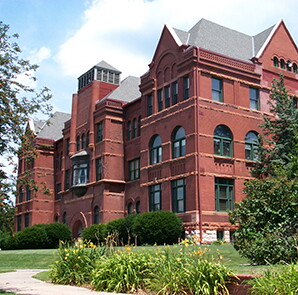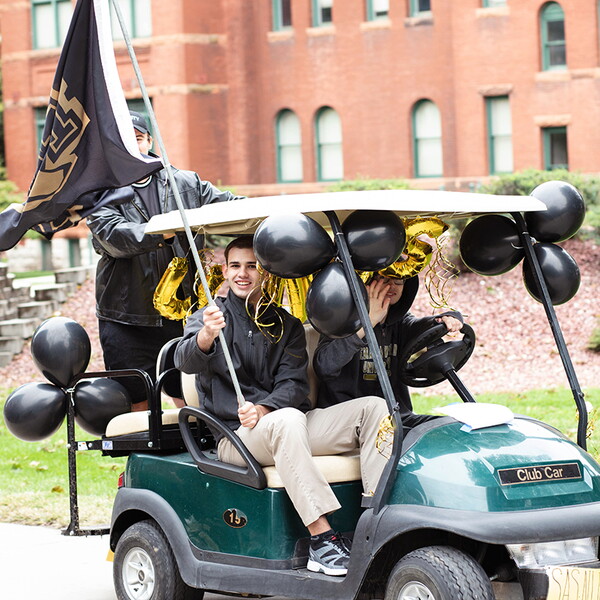She thought she wanted to be a veterinarian. Then she thought she wanted to be a medical doctor.
Both provide great opportunity and satisfaction, she thought, but she wanted to do something different. But what?
“I was always searching at the career center about things to do with animals and wildlife,” said Kari Morfeld, a 2001 graduate of Nebraska Wesleyan University and now an adjunct biology professor at her alma mater.
She discovered her passion her junior year when she landed an internship in the reproductive biology department at the world-renowned Henry Doorly Zoo in Omaha.
“It made me realize the impact I could have on animals,” Morfeld said of her experience.
After graduating from NWU, she pursued her master’s and doctorate degrees. She worked for the Smithsonian Conservation Biology Institute in Virginia where she eventually became a lead scientist on an elephant obesity study.
That research brought her back to Nebraska where she approached the Lincoln Children’s Zoo about collaborating with the Smithsonian. Today she’s a wildlife endocrinologist for the Smithsonian. She studies elephant health at zoos across the world but makes the Lincoln zoo her home base — which is good news for Nebraska Wesleyan biology students.
Morfeld has not forgotten the significance of that internship from her junior year. Nor has she forgotten the importance of engaged professors and good mentors. Morfeld mentors seven Nebraska Wesleyan students who work alongside her studying elephant welfare — particularly reproductive health.
“Nebraska Wesleyan was the reason I had the opportunity to intern at the zoo,” said Morfeld. “A lot of students are in the same place I was when I was in school. This opportunity exposes them to something different.”
That exposure is already paying off for two pre-veterinary medicine students.
“Learning about an animal’s blood chemistry and how it affects reproductive cycles in their daily lives will certainly help when I’m a veterinarian,” said Kody Pritschau, a senior from Firth. “I’m also learning lab techniques that I will definitely use later.”
Seniors Rachael Granville and Brooke Nerud are taking advantage of the university’s Student Faculty Collaborative Research Fund, a grant that provides students and their professors with funding for independent research.
“My research has helped me decide to change from a pre-med major to a pre-vet major, and I could not be happier with the decision,” said Granville, a senior from Papillion. “I knew my heart wasn’t fully in pre-med; I just didn’t know where to go. This has been a wonderful experience and exactly what I needed.”
Morfeld’s mentoring and research has also opened doors for recent NWU graduates, Lex Oestmann and Mia Keady, who earned their biology degrees in December and moved to Virginia to become research assistants at the Smithsonian Conservation Biology Institute where Morfeld began her career.
“We will be working with Natalia Obradovic, a colleague of Dr. Morfeld, on a project that focuses on abnormally high hormone levels in elephants,” said Oestmann, a native of Auburn. “I am very excited to get the opportunity after I graduate to continue to learn more about elephant endocrinology research and conservation biology at the Smithsonian.”
For Morfeld, researching and finding answers to elephant welfare is beyond gratifying. Equally gratifying is seeing her mentees succeed.
“I just want to expose the next generation of students to this field of research and be the mentor I wanted when I was in their position,” she said.









